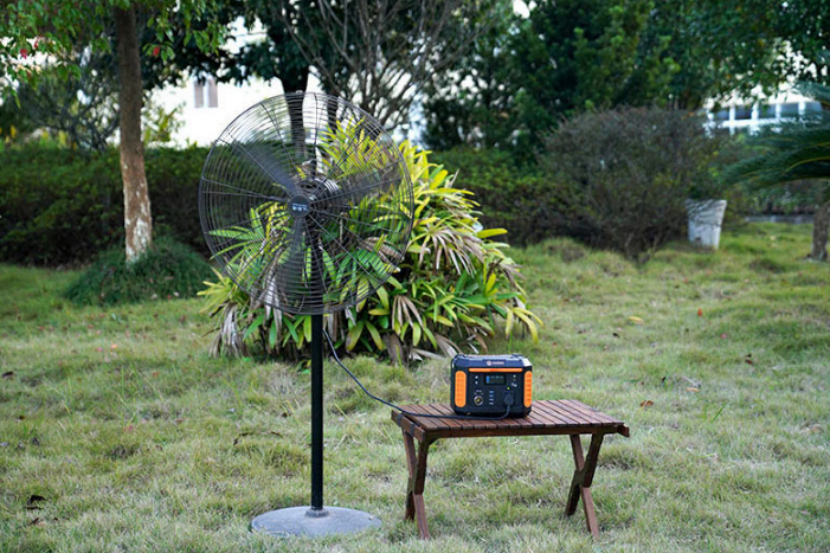BETTER TOUCH BETTER BUSINESS
Contact Sales at Litel Technology

Having a portable and backup power source is a need that everyone should meet in order to enjoy a quality life in any situation. A portable power station is a flexible, practical and green solution that provides you and your family with energy independence and resiliency. They provide portable and backup power for emergencies and outdoor adventures, powering lamps and electronic devices, as well as some appliances.
What is a portable power station?
Portable power stations are integrated backup energy systems that feature different charging methods, a large capacity battery, a built-in power inverter, and several DC/AC ports to power electronics and appliances for several hours or even days at a high power rate.
Applications of Portable Power Stations
backup power
Having a charging station will give you AC or DC energy to power critical loads for hours or even days, depending on several factors. This device is great for adding energy independence in your home to you and your family, making it a great ally in the toughest of situations.
Most power stations are not suitable for powering refrigerators or air conditioning systems (some of them are), but they are great for powering coffee makers, mini coolers, pressure cookers, electric grills, microwaves, and more. This energy solution can power your TV or computer for hours to keep you entertained during any type of power outage.
Outdoor use
Outdoor use is where portable power stations shine, especially for adventurers who want to enjoy nature while staying connected to their electronic devices during camping, road trips, and other types of adventures. Portable power stations are also great for powering appliances, electronics, and important gadgets in RVs, boats, and other vacation-friendly transportation.
Camping with a power station keeps you connected to nature while also charging your night lights, coffee maker, and electronics. Combining a photovoltaic power station for camping with solar panels will produce a solar power station generator that will provide you with electricity indefinitely, allowing you to indulge in a nature getaway.
What should I pay attention to when choosing a portable power station?
In order to get the right portable power station for you, it is important to match the technical specifications of the equipment to your energy needs and desired application. In this section, we advise you on how to choose the ideal portable power station for you.
What type of appliance are you going to power?
Portable power stations can power most appliances, but they have some limitations based on their power rating.
Rated power
The continuous power of a portable power station limits the amount and type of equipment you can use at the same time.
When purchasing a portable power station, you should fully consider the frequency output of the AC signal. It is important to choose a power station with an output frequency of 60Hz to use common appliances, as some models may work at 50Hz, which is suitable for appliances in other countries.
Battery Specifications
The battery is one of the most important components in a portable power station, which is why you must choose the right battery for your needs. Here, we detail some specs to consider when choosing the right model for you.
Capacity
The capacity of the built-in battery limits the autonomy of electrical and electronic devices.
Cytochemistry
Battery chemistry is one of the main factors that determine battery rated discharge power, capacity, operating temperature, life and stability. Some portable power stations use lighter lithium-ion (Li-Ion) technology, while others use lithium iron phosphate (LiFePO4) technology, which is safer, operates at higher temperatures, lasts longer, and is more resistant to heat out of control.
Life cycle
Lifecycle limits the useful life of a battery by setting the number of charge and discharge cycles at a certain depth of discharge (DOD). Some Li-ion batteries have around 300-500 cycles.
Management system
It is critical to ensure that the batteries of the portable power station, which is the heart of the device, are always protected. That's why we recommend choosing a power station that includes an advanced management system with overvoltage, overheating and short circuit protection.
Charging time
To enjoy solar power during the day and night, you must choose a portable power station that includes a fast charging system to avoid camping day power at night or in bad weather. We recommend choosing a power station with a charging time of 5 hours or less.
Including ports and exports
Depending on the type and number of DC/AC appliances and electronic devices you want to power simultaneously, you should choose a power station with more or fewer ports and outlets. For everyday use, some USB-A and USB-C are enough to power laptops and phones, with an AC outlet that can plug into a splitter and power multiple AC appliances, but the most demanding applications may require more ports.
Physical Specifications
Power stations cannot be completely lightweight and small because they have high-capacity batteries and multiple electronic components. For indoor use, this may not be a problem, but a portable power station for outdoor applications should have relatively low weight and small size. Smaller ones should include a comfortable handle, while larger ones should include carrying wheels.
Brand Compatible Solar Panels/Accessories
To improve compatibility between portable power stations for camping and solar arrays, consider purchasing from a brand that is compatible with both options, as they are likely to fit together perfectly without the need for additional connectors.
Copyright © 2025 Guangzhou Litel Technology Co.,Ltd. | All Rights Reserved
We are here to help you! If you close the chatbox, you will automatically receive a response from us via email. Please be sure to leave your contact details so that we can better assist